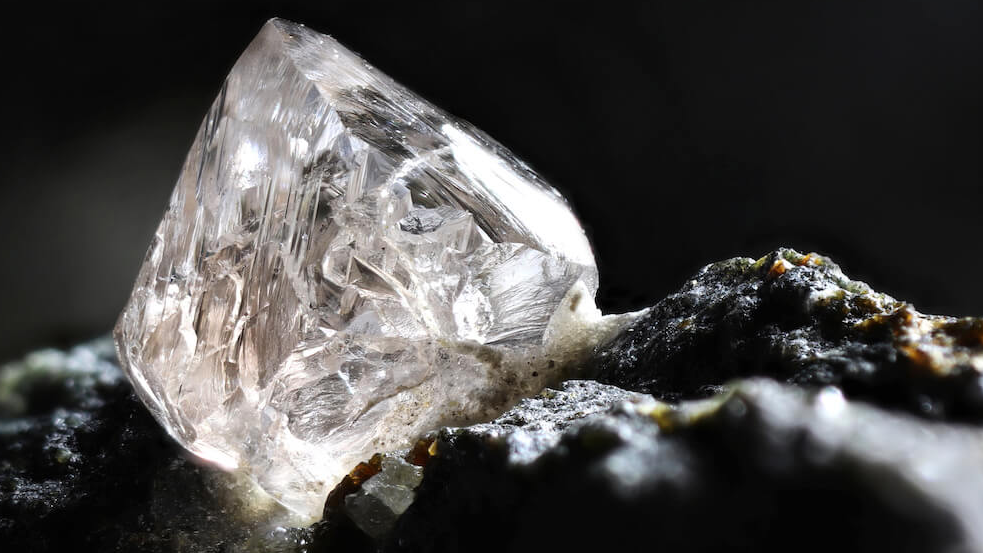[ad_1]

When purchasing for diamond jewellery, there are numerous frequent misconceptions and incessantly requested questions. What’s a pure diamond, and is it the identical as a mined diamond? How you can inform pure diamonds from laboratory-grown diamonds? What are the variations between pure and lab-grown diamonds? Are there environmental or social advantages to 1 over the opposite? It’s vital to know the info about what you’re shopping for before you purchase.
No. 1: How are they created?
Pure diamonds are shaped by the warmth
and strain of the Earth, from 1 to three billion
years in the past, making a pure diamond the
oldest factor you’ll ever contact.
The intense situations inside the Earth that created pure diamonds are solely the start of their journey. Thousands and thousands of years after their formation, on common, 100 miles deep inside the Earth, pure diamonds had been blasted towards the floor of the Earth by historical volcanoes. These volcanoes trapped diamonds of their molten rock because it exploded to the floor, and in the present day, diamonds are discovered within the remanence of those historical volcanoes we name kimberlite pipes. Pure diamonds are generally known as ‘mined’ diamonds, though some pure diamonds are recovered with out mining.
However, lab-grown diamonds are created by people utilizing equipment and power to power carbon to crystallize. Though sharing bodily and optical properties, lab-grown diamonds’ fast progress course of makes them simply identifiable from pure diamonds utilizing a correct tester.
No. 2: Are they uncommon and worthwhile?
The full quantity of pure diamonds
one carat and bigger recovered in a 12 months
would solely fill one train ball.
The worth of a pure diamond derives from its rarity as a finite, pure gem. This rarity and finiteness make pure diamonds worthwhile. During the last 35 years, pure diamonds have proven to understand in worth by roughly 3% on common yearly. Pure diamonds retain inherent worth over time, making them an unbelievable heirloom. Nevertheless, like different manufactured merchandise, lab-grown diamonds may be replicated in probably limitless portions. Between 2016 and 2022, the costs of laboratory-grown diamonds fell by greater than 70%.

No. 3: What’s their environmental impression?
The environmental impression of a one-carat
pure diamond from mine to finger is about
the identical because the environmental impression of
manufacturing three smartphones.
Researchers are utilizing the rocks during which diamonds are discovered, referred to as kimberlite, to soak up carbon dioxide from the environment in a ground-breaking analysis program with the goal of reaching carbon neutrality inside this decade. Additionally, triple the quantity of land pure diamond firms use is put aside for environmental conservation.
There are not any poisonous chemical bi-products utilized in pure diamond restoration as a result of as soon as they’re faraway from the bottom, diamonds are simply extracted from the host rock. The leftover rock is then saved on-site and used when the mine is closed to return the land again to its unique state.
Lab-grown diamonds are produced utilizing electrical energy and equipment to recreate Earth’s situations and generate temperatures of two,700 Fahrenheit and strain of 1.5 million kilos per sq. inch. Additionally they want massive quantities of water to chill down the reactors. Round 60% of LGDs are manufactured in China and India, international locations that rely closely on coal. There are additionally manufacturing services which have managed to make use of hydropower to interchange fossil gasoline however that’s nonetheless a restricted possibility for a lot of the laboratory-created diamond market.

No. 4: What do they symbolize?
The phrase ‘diamond’ comes from the Greeks,
who named the stone ‘adamas,’
which means unbreakable or unalterable.
Since their discovery nearly 4,000 years in the past, pure diamonds have fascinated people with their distinctive properties that had been beforehand unseen. They instantly got here to represent energy, resilience, and energy. Historical Greeks then named them ‘adamas’, which means unbreakable, identical to love. Mythology additionally sees Cupid’s arrows tipped with diamonds, as a diamond was mentioned to help in falling in love. The primary recognized diamond engagement ring was given in 1477, sparking the custom and cementing their standing as the last word image of affection, a sentiment that has unfold throughout cultures and thru time.


No. 5: Are they sustainable?
The pure diamond trade helps the
livelihood of 10 million folks globally.
Collectively, the world’s main diamond producers create $16 billion in internet constructive socioeconomic and environmental advantages yearly in international locations the place they function–80% of which stays inside native communities. Total international locations comparable to Botswana and distant areas, like Canada’s far North, have been utterly remodeled by the invention of pure diamonds.
The wealth generated by laboratory grown diamond firms largely advantages solely a choose few enterprise capitalists and buyers who’ve but to reveal socioeconomic contributions much like the pure diamond trade.
*Evaluation carried out by Trucost, a part of S&P International, primarily based on 2016/2017 information.
[ad_2]
Source link

